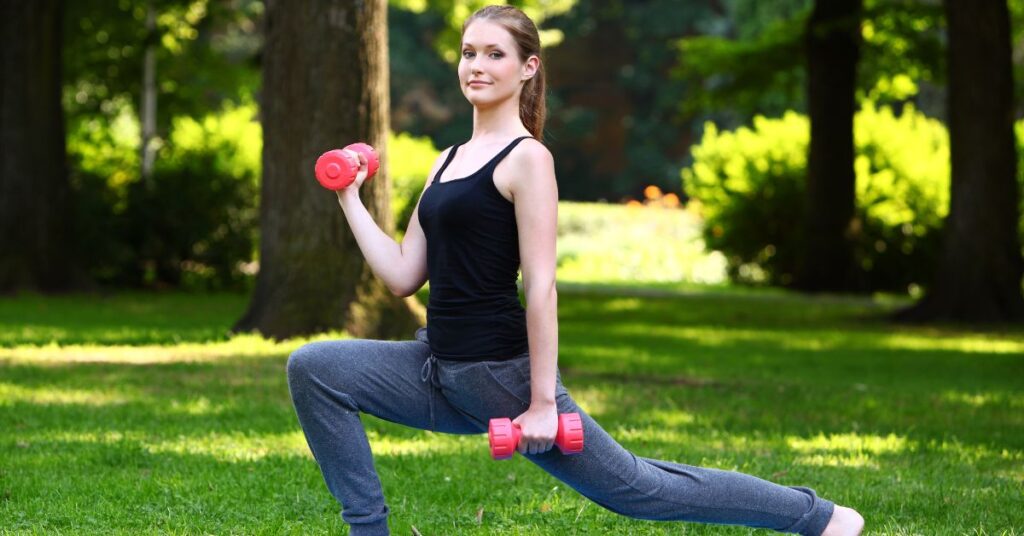In today’s fast-paced world, maintaining good physical health has become more crucial than ever. Fortunately, improving physical health doesn’t have to be complicated or time-consuming. By incorporating certain practices into our daily lives, we can experience significant benefits and enhance our overall well-being. In this blog, we will explore the various ways to improve physical health, including the power of exercise, laughter, nature, music, and specific tips for workplaces and students.
How Can Exercise Improve Physical Health?

Exercise is a cornerstone of physical health and offers numerous benefits, such as:
1. Improved cardiovascular health: Engaging in regular aerobic exercise, like running or swimming, strengthens the heart and reduces the risk of heart diseases.
2. Weight management: Exercise helps burn calories and maintain a healthy weight, reducing the risk of obesity-related complications.
3. Increased muscle strength and flexibility: Strength training exercises build and tone muscles, while flexibility exercises improve range of motion and prevent injuries.
4. Enhanced mental well-being: Exercise releases endorphins, promoting feelings of happiness and reducing stress, anxiety, and depression.
Regular physical activity is also linked to better sleep patterns, reducing the risk of insomnia and promoting overall well-being. From the gym to outdoor activities, finding an exercise routine that suits your lifestyle is a pivotal step toward achieving and maintaining optimal physical health.
How Can Laughter Improve Physical Health?

Laughter is a universal language, and its benefits extend far beyond a momentary amusement. Laughter truly is the best medicine, as it brings numerous physical health benefits, including:
1. Immune system boost: Laughter increases immune cell production, improves antibody activity, and enhances resistance against diseases.
2. Pain relief: Laughter triggers the release of endorphins, natural painkillers that provide temporary relief from discomfort.
3. Cardiovascular health: Laughing stimulates blood flow and boosts heart function, helping lower blood pressure and reduce the risk of heart disease.
4. Muscle relaxation: Laughter eases tension and relaxes muscles, providing relief to individuals suffering from muscle stiffness or chronic pain.
From incorporating humor into daily life to seeking out activities that induce genuine laughter, recognizing the healing power of laughter is a simple yet profound step toward improved physical health.
How Can Nature Improve Physical Health?

Connecting with nature has a profound impact on physical health, leading to the following benefits:
1. Reduced stress and anxiety: Spending time in nature lowers cortisol levels, the stress hormone, and improves overall mental well-being.
2. Increased physical activity: Engaging in outdoor activities like hiking, biking, or gardening promotes exercise and improves cardiovascular health.
3. Improved immune system: Exposure to the diverse microorganisms found in nature strengthens the immune system and reduces the risk of allergies and autoimmune diseases.
4. Enhanced vitamin D levels: Spending time outdoors exposes us to sunlight, allowing our bodies to produce vitamin D, essential for bone health and immune function.
Whether it’s a leisurely stroll in a nearby park or a weekend hiking excursion, incorporating nature into daily life offers a multitude of physical and mental health benefits.
How Can Music Improve Physical Health?

Engaging with music offers a range of physical health benefits, including:
1. Stress reduction: Listening to music has a calming effect, reducing stress hormones and promoting relaxation.
2. Enhanced workouts: Exercising to upbeat music can increase endurance, motivation, and overall enjoyment during physical activity.
3. Pain management: Music therapy has been shown to alleviate chronic pain by distracting individuals from their discomfort and promoting relaxation.
4. Improved sleep quality: Listening to soothing music before bedtime aids relaxation, promotes better sleep, and reduces symptoms of insomnia.
Whether it’s creating personalized playlists for workouts, enjoying live music performances, or engaging in active music-making, integrating music into daily life can be a pleasurable and effective strategy for enhancing physical well-being.
How to Improve Physical Health in the Workplace?

Promoting physical health in the workplace is vital for employee well-being. Consider the following strategies:
1. Encourage regular movement breaks: Encourage employees to stand up, stretch, and take short walks throughout the day to combat sedentary behavior.
2. Create an ergonomic workspace: Ensure employees have proper ergonomics, such as adjustable chairs, standing desks, and supportive equipment to reduce the risk of muscle strain or injury.
3. Offer wellness programs: Implement lunchtime exercise classes, step challenges, or mindfulness sessions to promote physical activity and reduce stress.
4. Promote healthy eating options: Provide healthy snacks, encourage water consumption, and offer nutritional education to foster healthy eating habits among employees.
How to Improve Physical Health of Students?

Fostering physical health among students is essential for their overall well-being. Consider the following approaches:
1. Incorporate physical activity breaks: Integrate short exercise breaks into the classroom routine to help students stay active and engaged.
2. Promote active transportation: Encourage students to walk or bike to school to increase physical activity levels and reduce reliance on cars.
3. Provide nutritious school meals: Offer balanced meals including fruits, vegetables, and whole grains to ensure students receive the necessary nutrients for their physical development.
4. Integrate physical education programs: Schools should prioritize physical education classes, ensuring all students have access to physical activity, regardless of their skill level.
Final Thoughts
Improving physical health is a journey that involves multiple facets. By incorporating exercise, laughter, nature, and music into our lives, we create a synergistic approach that enhances our overall well-being. Whether in the workplace or among students, prioritizing physical health yields countless benefits, leading to happier, healthier individuals. So, let’s embark on this journey and unlock our full potential by investing in our physical health.
Read More:- Are Dark Eyelids a Health Warning? Exploring the Causes and Concerns
Dr. Paula Parker is a highly skilled and compassionate general physician dedicated to providing comprehensive healthcare services to patients in Michigan, United States. Dr. Paula Parker earned his Doctor of Medicine (MD) degree from the esteemed University of Michigan Medical School






